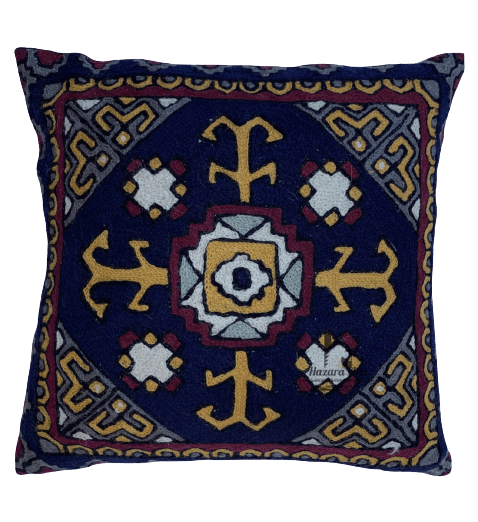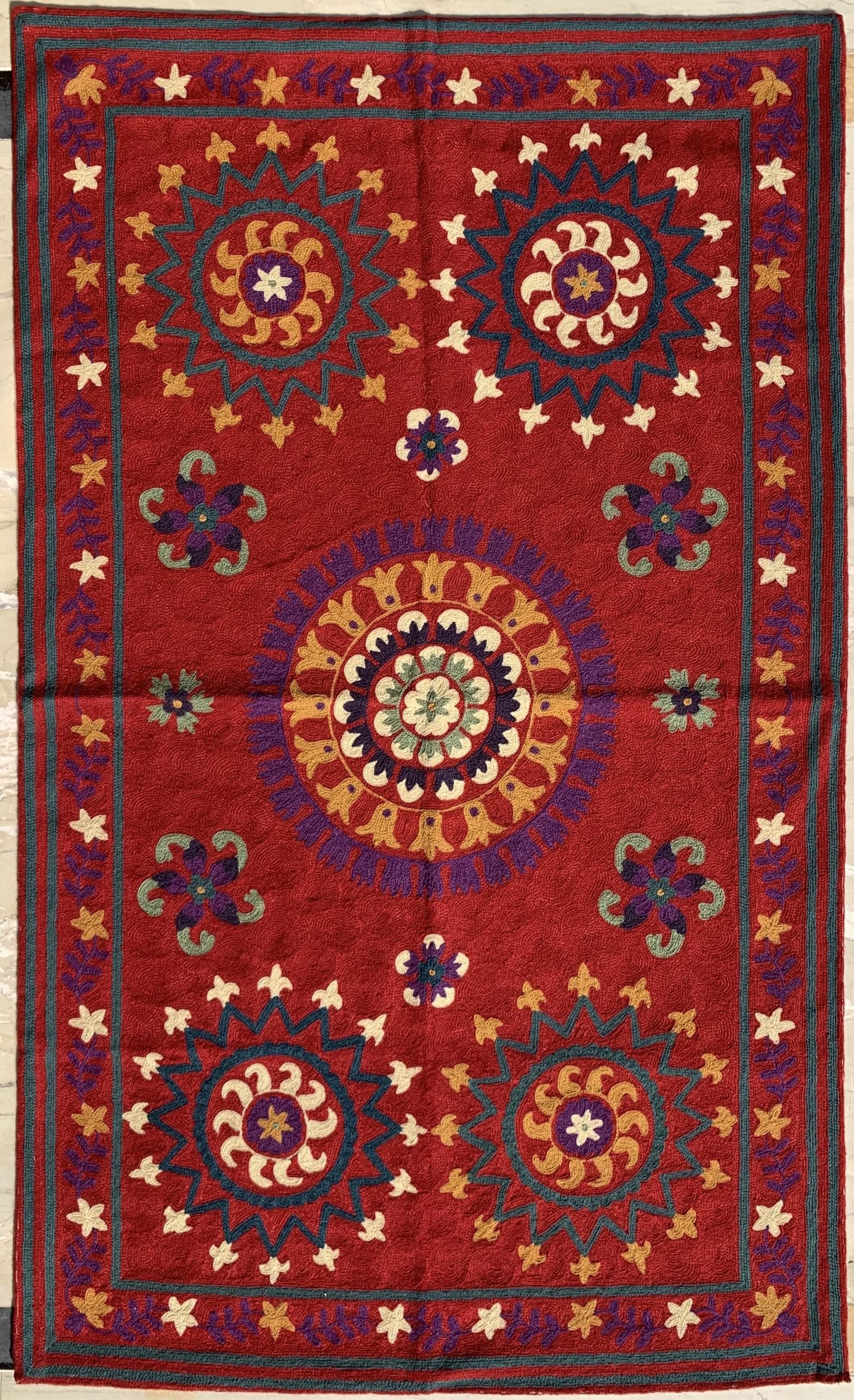About crewel embroidery
Crewel embroidery
How did crewel embroidery start in Kashmir?
Crewel embroidery, also known as “Kashida” probably started to be practiced in Kashmir in the 15th century, during the reign of Zain-ul-Abidin. Most likely the art form was introduced to the region via the silk route.
Which materials are used in crewel embroidery?
Mostly woolen or silk thread is used on materials like linen or cotton.
Which motives are used in crewel embroidery?
There is a wide range of motives that are being brought onto fabric, most typically it is floral patterns, chinar trees or chinar leaves.
On which products is crewel embroidery applied?
Crewel embroidery is applied on curtains, upholstery, clothes, bedding, cushion covers, wall hangings, carpets, shawls and other products.


How does the process of crewel embroidery work?
First of all a design is created on transparent paper, and small holes created along the lines of the design. A so-called “Naqshaband” is responsible for putting the design pattern onto the fabric. He will spread the paper over the fabric and wipe over it with chalk or charcoal powder. The chalk or charcoal then sinks through the holes in the paper onto the fabric. In order to make the lines of the design more durable, oil is applied on the paper as well. The design will then be traced with a pen. After that, the actual process of embroidery takes place. The so-called “Zalakdoz”, the embroiderer, will use a needle called “aari” to embroider the fabric. 1-ply embroidery uses a single ply yarn, 2-ply embroidery a 2-ply woolen yarn. 2-play embroidery is more durable and also more costly. Once the embroidery is done, the finished piece gets washed before it is sold.
